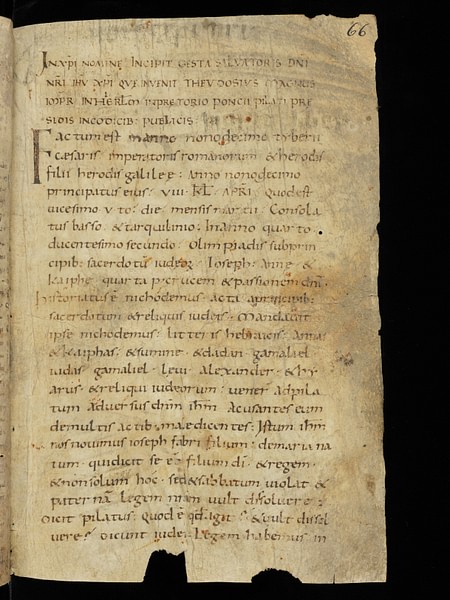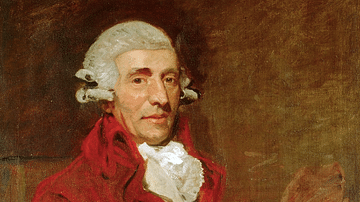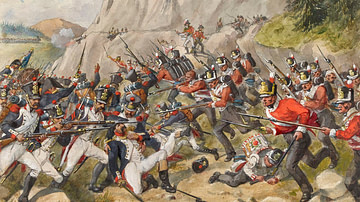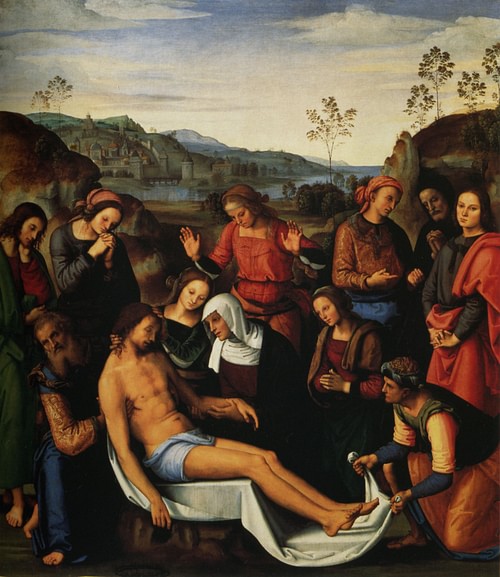
Joseph of Arimathea was a follower of Jesus of Nazareth who buried him in his own tomb after the crucifixion. In the gospels, Mark and Luke identified him as a member of the Sanhedrin, the Jewish Council in Jerusalem. The location of Arimathea is not known, but it is traditionally identified with several hill towns near Jerusalem.
We hear nothing about Joseph of Arimathea during the ministry of Jesus. The gospel of John described him as a secret disciple (for fear of the Jewish leadership) and as the one who obtained Jesus' body from the procurator, Pontius Pilate. In the Middle Ages Joseph became associated with the cathedral at Glastonbury, England, and with the legend of the Holy Grail.
Jesus' Death & Burial
The preaching of Jesus of Nazareth was that God's final intervention in human history was imminent, that the kingdom of God was about to appear. The gospels portrayed the story of Jesus through the lens of the predictions concerning this event in the books of the Prophets of Israel. Early Christianity had identified Jesus with the suffering servant passages in Isaiah. This servant was tortured and killed for his righteousness.
He was assigned a grave with the wicked, and with the rich in his death, though he had done no violence, nor was any deceit in his mouth. (Isaiah 53:9)
God then resurrected the servant and placed him next to him on his throne. The story of Joseph of Arimathea served to fulfill this prediction of Jesus being placed in a rich man's grave.
Crucifixion was a unique Roman punishment for the crime of treason. Preaching a kingdom that was not Rome (and thus criticizing the Roman government) was treason, and it resulted in the trial and crucifixion of Jesus of Nazareth. Roman wanted traitors to suffer for all eternity and so crucifixion victims were denied the traditional burial rituals for the afterlife. The victim stayed on the cross for several weeks, until the vultures pecked away at the flesh. The bones were simply tossed into a nearby ditch for the feral dogs.
One of the earliest claims concerning Jesus by his followers was that he was resurrected from the dead and translated to share God's throne in heaven. Resurrection was a concept that included both the body and the soul. To validate this belief, Jesus' body had to be preserved from the usual process. The character of Joseph of Arimathea became the essential instrument in preserving his body. His approach to Pontius Pilate is narratively plausible after the trial and crucifixion of Jesus of Nazareth. Although it was forbidden to bury a crucifixion victim under Roman law, Roman magistrates were notoriously famous for taking bribes. Joseph being a rich man, being able to offer such a bribe, would have been a recognizable plot feature for Mark’s audience
Legends of Joseph of Arimathea
In the 2nd century CE, more details were added to the story of Joseph through the writings of Irenaeus, Hippolytus, Tertullian, and Eusebius. John Chrysostom (c. 347-407 CE) was the first to include Joseph as one of the 72 disciples appointed by Jesus in Luke 10. Tertullian (c. 160 to c. 200 CE) claimed that Pilate wrote a report to the Roman Senate with the details. Two apocryphal Acts of Pilate mentioning Joseph appeared.
By the Middle Ages, the Acts of Pilate was incorporated into a legendary Gospel of Nicodemus. Nicodemus was another secret disciple reported only in John's gospel. The Gospel of Nicodemus related that the Jews imprisoned Joseph (for going against Roman law). While there, Joseph had a vision of the resurrected Jesus, confirming that he was now alive in heaven.
The Narrative of Joseph of Arimathea
A later medieval text claimed to be written by Joseph himself. In this version, Joseph and Nicodemus were the only two who did not vote to condemn Jesus during his trial before the Jewish Sanhedrin. This text is less significant on the details of Joseph but provides Christian history with the names and details of the two 'thieves' crucified with Jesus. The Greek lestes ("bandits") was mistranslated into "thieves" in English Bibles. Crucifixion was a punishment for treason; Rome did not crucify thieves. The lestes, or bandits, mentioned in the text were members of the sect of Zealots, who objected to Roman authority and attacked Roman convoys and other Jews who cooperated with Rome. The writer utilized the story in Luke's gospel that the second thief, Demas, asked to be forgiven (Luke 23:39-43). He eventually became a saint in traditional Christianity.
The Arthurian Legends
In the 12th century, Joseph was connected to various legends of King Arthur and the Holy Grail. In Robert de Boron's Joseph d'Arimathie, we have the first details of the cup of the Last Supper. According to the story, Joseph was present at the supper and secretly kept the cup. When he and Nicodemus took the body down from the cross, drops of Jesus' blood fell into the cup. Then Jesus appeared in a vision to Joseph carrying an image of the cup (now a chalice) and commissioned him to keep it. During each day of Joseph's imprisonment, a dove dropped a wafer into the cup and nourished Joseph.
The Joseph d'Arimathie is quite a long and complicated history that includes the descendants of Joseph and his eventual journey to England. This text and 13th-century additions to it include many details regarding Joseph. One such detail is that Joseph became involved with the movement because he was Mary's uncle and Jesus' great-uncle. Another important piece of information is that Joseph made his money as a tin merchant, and he had business in Britain. This was the source of his wealth. He also took the younger Jesus on a business trip to England before the ministry began. This story not only explained how Joseph could afford to bribe Pilate but also helped to furnish details of the missing years of Jesus. Anglican Church folklore of this tale was incorporated into Hubert Parry's (1848-1918) hymn, Jerusalem, based on William Blake's (1757-1827) poem of 1804:
And did those feet in ancient time
Walk upon England's mountains green:
And was the holy Lamb of God,
On England's pleasant pastures seen!(Blake, Milton: A Poem in Two Books, Preface)
According to the Joseph d'Arimathie, in addition to the Holy Grail, Joseph also brought a vial of blood and a vial of Jesus' sweat from the cross with him.
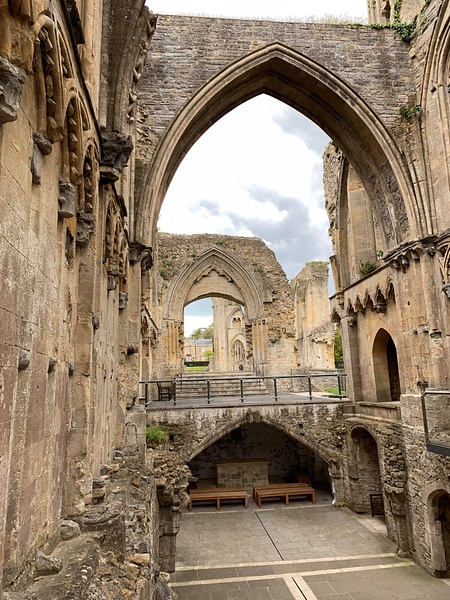
Joseph is credited with building the first Christian churches in Britain, the most famous being Glastonbury Cathedral. Traditions emerged that this was the site of the tomb of King Arthur and Guinevere. The Chronicle of Glastonbury Abbey by John of Glastonbury in 1350 included a story that Joseph's staff, when planted at Glastonbury, turned into the Glastonbury thorn tree, which blossoms only at Christmas and Easter.
Joseph became the ancestor of Percival of the Grail legends. In one of the earlier stories, he used the cup to miraculously provide food in the form of fish. This is the origin of the later legend of the Fisher Kings who were guardians of the Grail.
It was reported that Joseph of Arimathea died at the age of 86, and six kings carried his body in the funeral. Joseph of Arimathea is venerated as a saint by the Roman Catholic and Eastern Orthodox traditions. He remains the patron saint of morticians and undertakers.
